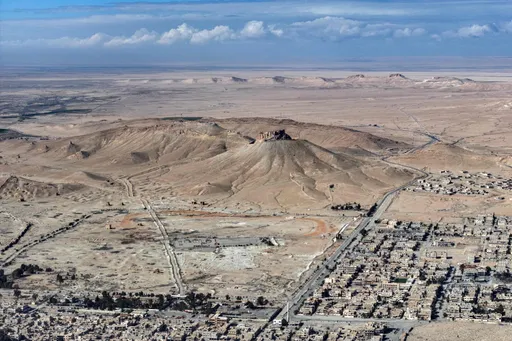The United Nations Human Rights Council (UNHRC) adopted a resolution on Monday, asking the rights chief, Michelle Bachelet, to embark on a fact-finding mission for Libya and address the human rights situation in the war-torn country.
The resolution strongly condemned all acts of violence in Libya, and asked the UNHRC to reveal facts and circumstances concerning human rights abuse in the North African country.
The mission has been given the authority to "collect and review relevant information to document alleged violations and abuses of international human rights law and international humanitarian law by all parties in Libya since the beginning of 2016".
The resolution came days after Libya's UN-backed government discovered eight mass graves in Tarhuna, the city which had been used as the supply and operation centre of warlord Khalifa Haftar and his militia.
Following the liberation of the city, more than 150 human bodies including women and children were found in several mass graves. The UN Support Mission in Libya (UNSMIL) called the incident “terrifying.”
Commenting on the issue on Twitter, UNSMIL said: "UNSMIL notes with horror reports on the discovery of at least eight mass graves in past days, the majority of them in Tarhuna."
The UN resolution is mainly concerned with reports of torture, sexual and gender-based violence and harsh conditions in prisons and detention centres, and the information will be collected to "preserve evidence with a view to ensuring that perpetrators of violations or abuses of international human rights law and international humanitarian law are held accountable."
Despite the development, the main question is how efficiently a resolution or condemnation would work in Libya as it has not yet helped Syria. Bashar al Assad regime has murdered many civilians. The nature and scale of abuses by the Syrian Regime, strongly indicates that crimes against humanity have taken place.
French and Russian dilemma
When the resolution on Syria was adopted in 2012, there were 5,400 people killed and until now, according to the UN Envoy for Syria, 395,000 more have lost their lives. Many experts have criticised the UN’s resolutions and investigations for their inability to bring the perpetrators to justice.
Two of the UN’s five permanent members, Russia and France, have been supporting the warlord Haftar who is himself accused of being a war criminal.
On the other hand, much to the shock and embarrassment of the Macron administration, Paris's position on Libya was revealed in 2016 when undercover French soldiers died in a helicopter crash in Benghazi.
Since then, France has time and again come under international scrutiny over its role in Libya's civil war. For one, it has violated the UN arms embargo on several occasions.
In July 2019, a Pentagon investigation concluded that Paris had supplied American-made, anti-tank missiles to Haftar's forces. Each missile is worth $170,000 and the US only sells it to "close allies," such as France.
On the other hand, US Africa Command recently stated that as many as two thousand mercenaries belonging to the infamous Russia-based Wagner Group, were believed to have been sent to Libya to support warlord Khalifa Haftar. According to several reports, the Wagner Group is closely linked to Russian President Vladimir Putin. Furthermore, evidence suggests that the country sent more than a dozen fighter jets to support Khalifa Haftar.
Assad's chemical warfare in Syria
In April this year, an investigative team behind the Organization for the Prohibition of Chemical Weapons’ report, revealed that regime forces in Syria dropped bombs containing either chlorine or sarin on a hospital, as well as on open farmland in the central town of Latamneh. This incident injured more than 70 people.
The team concluded that “there are reasonable grounds” to believe that the perpetrators in Latamneh who used sarin on March 24 and 30, and chlorine on March 25, 2017, were part of the Syrian Arab Air Force. But nothing happened.
According to experts, Syria’s case highlights the limits of the UN’s governance mechanisms in the face of complex situations.
























